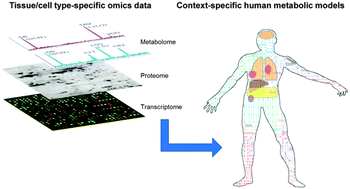Reconstruction of genome-scale human metabolic models using omics data
Abstract
The impact of genome-scale human metabolic models on human systems biology and medical sciences is becoming greater, thanks to increasing volumes of model building platforms and publicly available omics data. The genome-scale human metabolic models started with Recon 1 in 2007, and have since been used to describe metabolic phenotypes of healthy and diseased human tissues and cells, and to predict therapeutic targets. Here we review recent trends in genome-scale human metabolic modeling, including various generic and tissue/cell type-specific human metabolic models developed to date, and methods, databases and platforms used to construct them. For generic human metabolic models, we pay attention to Recon 2 and HMR 2.0 with emphasis on data sources used to construct them. Draft and high-quality tissue/cell type-specific human metabolic models have been generated using these generic human metabolic models. Integration of tissue/cell type-specific omics data with the generic human metabolic models is the key step, and we discuss omics data and their integration methods to achieve this task. The initial version of the tissue/cell type-specific human metabolic models can further be computationally refined through gap filling, reaction directionality assignment and the subcellular localization of metabolic reactions. We review relevant tools for this model refinement procedure as well. Finally, we suggest the direction of further studies on reconstructing an improved human metabolic model.

- This article is part of the themed collection: Integrative Approaches for Signalling and Metabolic Networks

 Please wait while we load your content...
Please wait while we load your content...